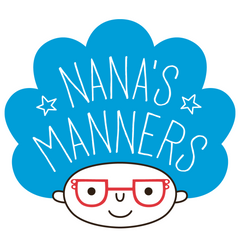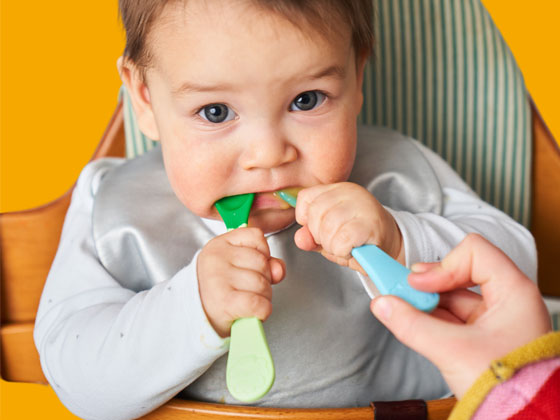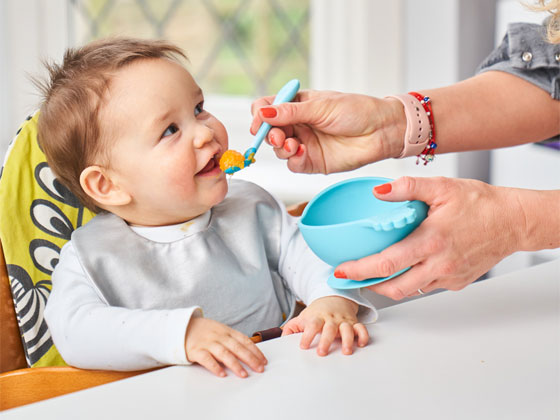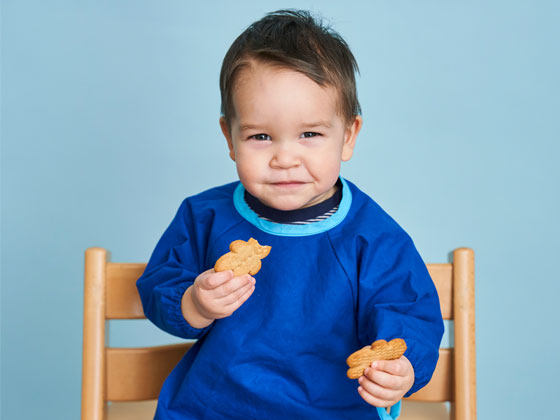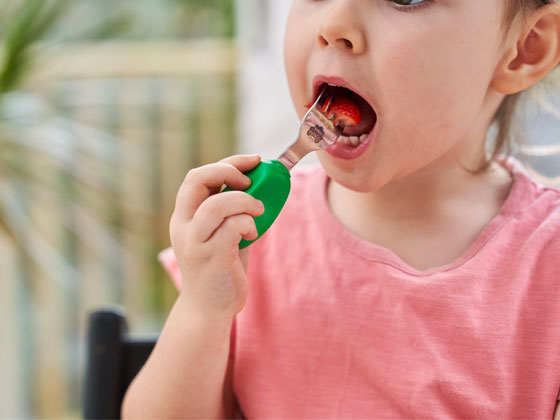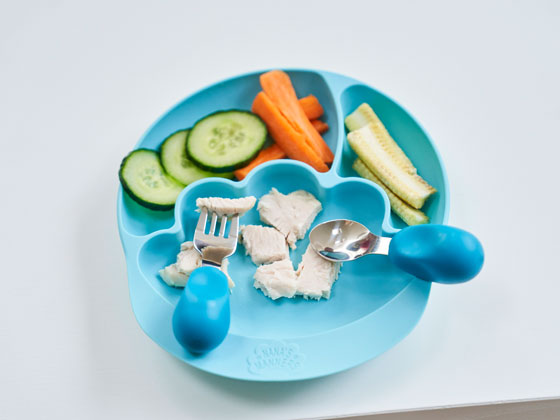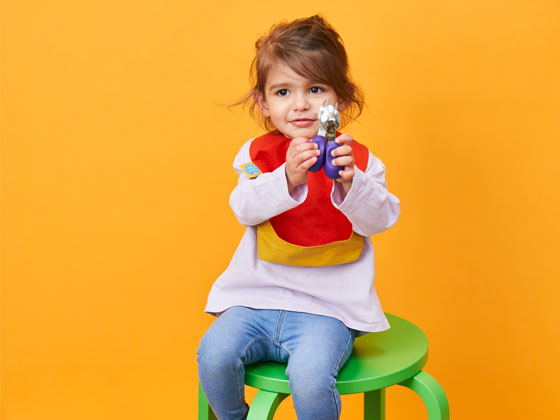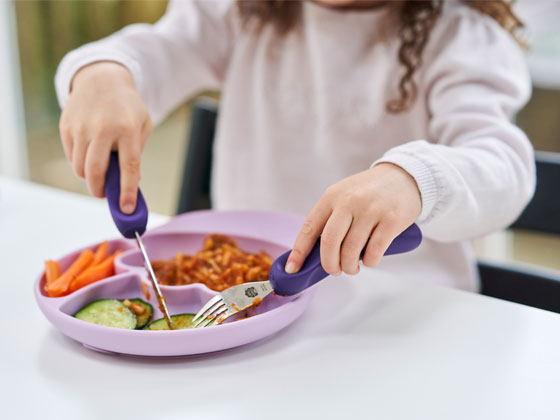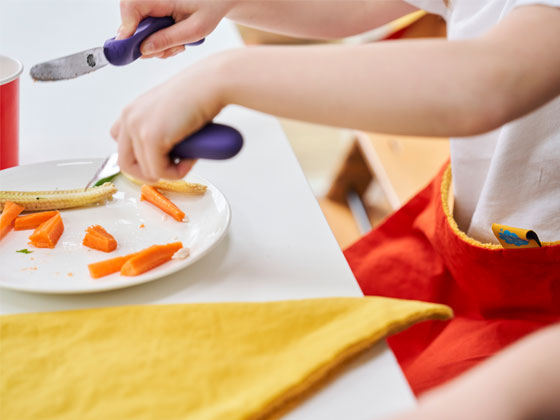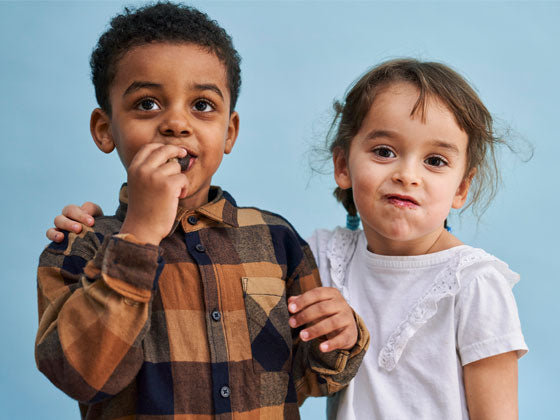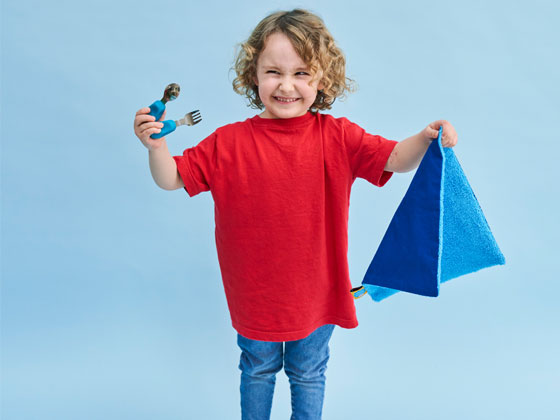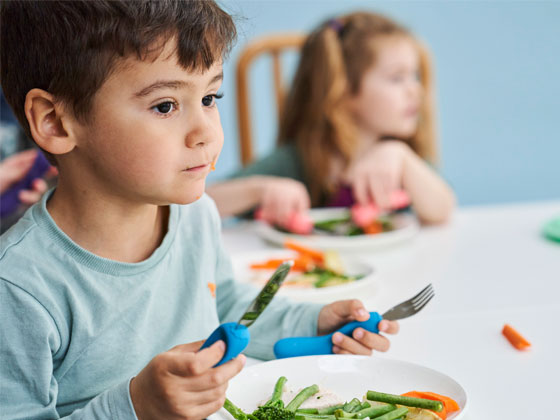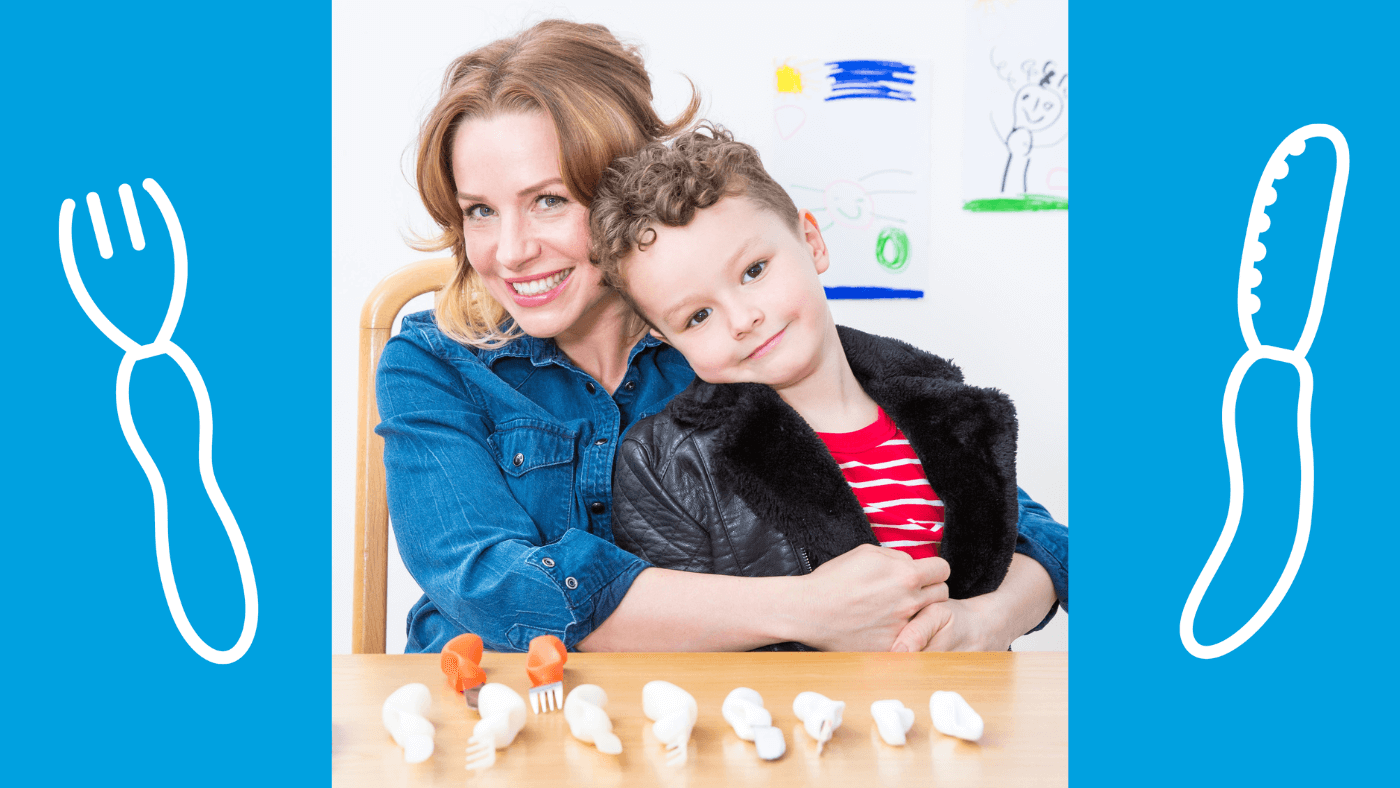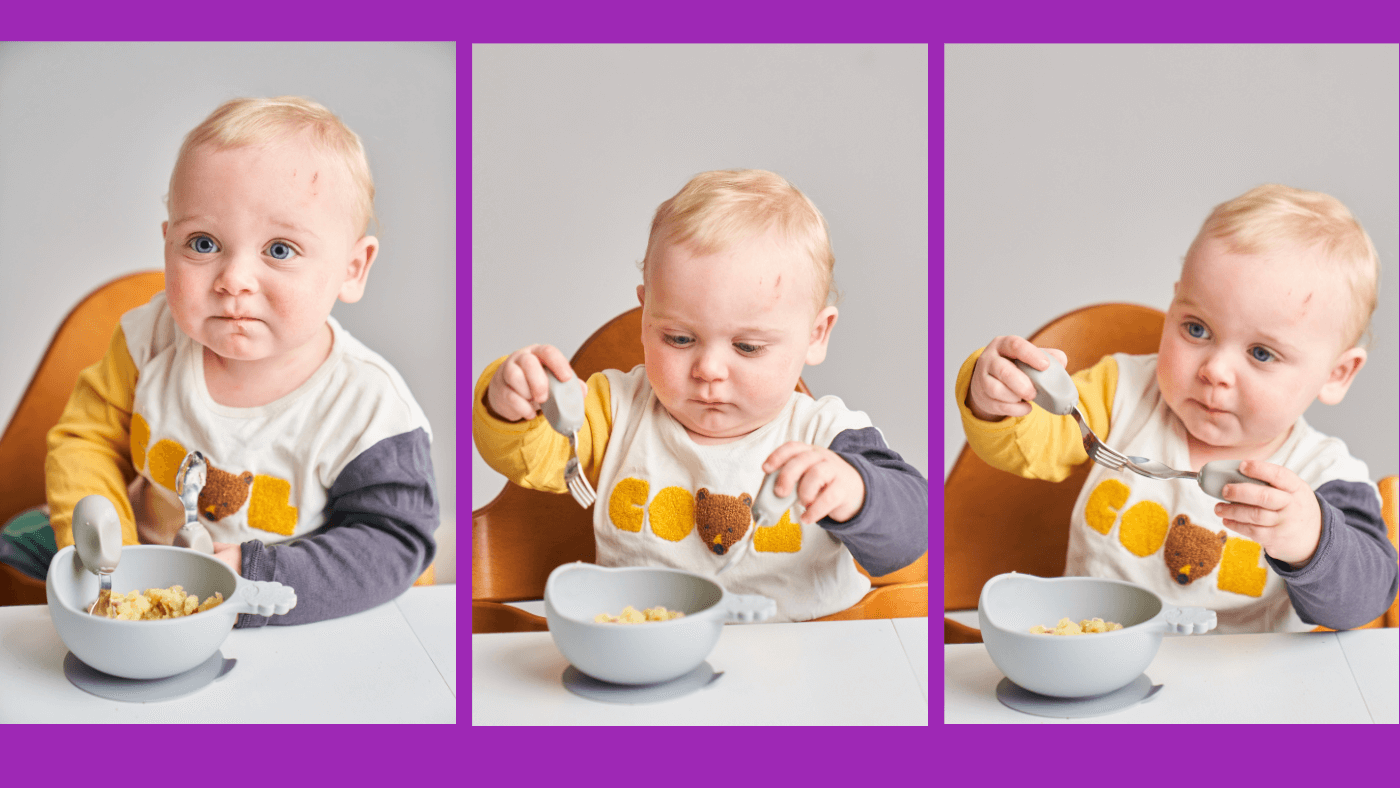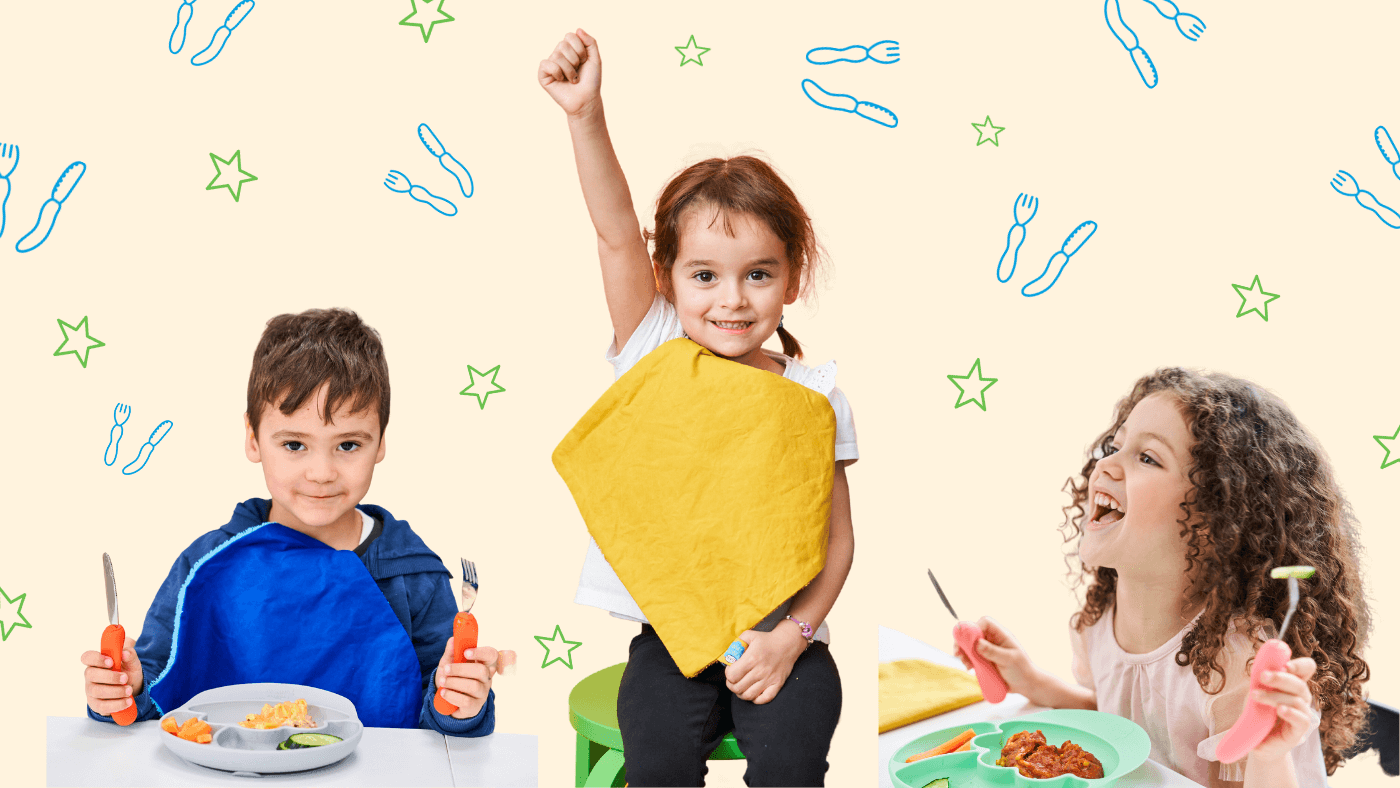Is your children’s cutlery suitable for left handers?…
This is something we understandably get asked regularly. The short answer is YES - all stages of our children’s cutlery are suitable for left-handed kids. The longer answer is also YES - our children's cutlery is for left-handed kids - but with a number of reasons and explanations as to why this is the case.
As a left hander myself, I can say from direct experience that we live in a world designed for right-handed people. From fountain pens (back in the day), cheque books (again, showing my age here!), to ironing boards and the side of the dial on a wristwatch. Therefore it’s natural to assume that your “handedness” would affect how you use cutlery.
It certainly does when it comes to using a single item of cutlery in a precise way, for example a bread knife or sharp knife to cut hard fruit - the vast majority of people will put this in their dominant hand.
However, when it comes to using 2 items – a knife and fork – together in co-ordination, the conclusion is a bit more complex.
Before we launched Nana’s Manners, back in the years we spent designing and refining the handle shapes, we read a LOT of research, theories and surveys in the use of children’s cutlery, as well as discussion forums. The overall conclusion we have seen is that hand dominance is not directly related to which hand you hold your knife and fork in. It is a learnt behaviour. The way you learn at an early age, with your first children’s cutlery, is the way you’ll almost certainly continue.

As I’ve already mentioned, it is clear that in actions involving the use of one hand, such as using a pencil, scissors, or cutting with a sharp kitchen knife, people will choose to use their dominant hand. The difference in many other everyday actions is that they involve using both the left and right sides of your body together. Activities such as riding a bike, driving a car and using a knife and fork require the co-ordination of both hands. In these processes there is not always a clearly "left" or "right" handed way to manage them. Both sides are doing an important job in co-ordination with the other. Think of a manual car; left and right handers don’t need the gear sticks on different sides or the pedals, we just learn which side does what.
An interesting fact we found in our research of children’s cutlery;
The tradition of using your knife in your right hand dates back to pre 17th Century. Until this time the fork was used, if at all, to grip the meat whilst it was being cut. The knife was the essential item and a man would bring his own knife. This would be a sharp hunting knife he used for many non-culinary tasks! The knife was drawn with the right hand.
Thankfully we’ve come a long way since then! With all this in mind, we have designed our cutlery to be held ‘traditionally’, with the fork in the left hand, knife in the right. The slight curve in the handle makes this the most natural way. However, both our knife and fork are shaped with our three-finger, tripod grip which can be held by either hand effectively, so can also be held the other way round. They work for all!
And that was the long answer!!
Have a great day - Kathryn x

All 3 Stages of our children's cutlery are available here - for your left and right handers!
